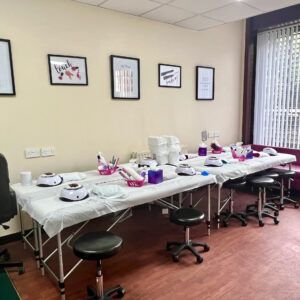Yeyang Zhu has recently finished her postgraduate studies at the University of Edinburgh. This is a brief summary by Yeyang of her placement-based dissertation, conducted in collaboration with SURF and the University of Edinburgh in 2023. Yeyang expresses sincere thanks to SURF and interviewees from the third sector and the Scottish Government for their valuable contributions.
Within the Scottish context, community regeneration has held long-standing importance, with large sums of investment being channelled into regeneration efforts through various sources. Driven by a keen interest in boosting the development of sustainable communities, this project analyses the national public grants in Scottish community regeneration from 2017 to 2022. The goal is to identify evidence that could be useful in realigning public funding for better outcomes.
The primary focus lies on the distribution of grants in capital (physical) and project (social) dimensions, along with their allocation between deprived and less deprived areas. For a more comprehensive understanding, this project carries out quantitative research regarding published public funding for regeneration, as well as qualitative research consisting of 13 semi-structured interviews with grant funders and regeneration practitioners. The key takeaways are summarised below.

Ongoing physical redevelopment of The Ridge, Dunbar
Funding Landscape
There is far more capital funding than project funding. Although effective social regeneration has demonstrated its benefits and significance at both individual and societal levels, such as increasing educational attainment and employability, addressing social exclusion and cultivating a community’s unique identity and heritage, the project investment remains inadequate. The quantitative results indicate that capital funding surpasses project grants by over threefold, which aligns with general observations from the Scottish Government and the third sector. However, the interpretations vary from different stakeholders.
While a government official comments the percentage of investment doesn’t necessarily tell anything about the balance of funding, as the costs of delivering capital projects are inherently more expensive compared to resource projects, the third sector captures other crucial contributing factors:
‘The funders prefer capital projects because capital projects are often income generators. Although the social projects bring many social benefits, they won’t return income economically.’ (Helen, Mull and Iona Community Trust)
An artwork produced by children in The, Pyramid, Anderston, Glasgow
Although ideally deprived areas are prioritised in granting, they remain disadvantaged in competing for funds. Many organisations in deprived areas are less skilled and less organised to navigate the application process, and may encounter stereotypes of less growth potential and investment returns. While an official from the regeneration unit noted: ‘Whether it is capital or resource, our most vulnerable communities are where we target all of the funding that we have’, not all the funders can follow such good practices. For example, the mismatch between deprived regions and capital investment flows is evident at the macro level- while western regions experience higher deprivation levels, more money is inclined to central areas.
Additionally, deprived areas in rural settings, especially in remote regions, receive less investment than counterparts in urban regions or close to urban regions. Currently, the deprivation in rural areas is totally different from that in cities but is not well understood by funders. The rural deprived communities often face limited service access and higher construction costs (Holly and Jenny, Dunoon Burgh Hall), lack of large numbers of people as expected outcomes due to mobility issues (Paula, The Dornoch Hub), and there are various invisible barriers to securing funding. Some interviewees even feel current policies, like the 20-minute neighbourhood concept, are very ‘urban-based’ and almost impossible to work on islands where public transport is very poor.
‘There is often no involvement of the cultural sector in planning or consultation in regeneration […] The regular circular diagram of the 20-minute neighbourhoods makes no reference to culture or arts.’ (Robert, retired from Regional Screen Scotland)

Nail & make-up training room at the DRC Youth Project, Yoker, Glasgow
Within Regeneration Organisations
It’s widely acknowledged that what really matters in regeneration is sustainable development. Beyond initial construction, the focus then shifts towards fostering longer-term and integrated growth of projects (Jonathan, Elderpark Housing Association; Fiona, CentreStage), thereby leaving a legacy for the next generation.
‘The hard work just began when we opened the doors of our facility, because it’s making sure [the hub] is there for the next decades for our community.’ (Alex, Ochiltree Community Hub)
However, after the physical-intensive phases, many follow-up projects struggle to continue due to key challenges like insufficient social investment, lack of granted core funding and difficulties accessing funding. There is still a long way to go to establish the holistic picture of regeneration.
First, most practitioners are passionate about delivering more social projects but are subject to limited project funding (Jeremy, The Gaiety Theatre; Jonathan, Elderpark Housing Association). During the past five years, more interviewees have received much more capital than project grants, indicating the need for activities vastly outweighs the available funding.

The Gaiety Theatre, Ayr
Second, the third sector highlights the absence of external core funding, which should have played a pivotal role in ensuring organisation flexibility and addressing local issues (Alex, Ochiltree Community Hub), reducing staff turnover to retain the skills and experience within the organisation (Maggie, The Ridge; A staff member from DRC Youth Project) and serving as start-up funding for self-sustaining core funding (Sian, Mull and Iona Community Trust) to better support socially focused projects.
Third, the accessibility problem of funding is frequently mentioned. This concern is reflected in the low success rate, short-termism of funding streams (Holly and Jenny, Dunoon Burgh Hall) and high requirements of resources, time and skilled people (Kate, North Edinburgh Arts; Ailsa, The Pyramid). The interviewees primarily attribute the accessibility problem to the constrained public budget, the fragmented and complex funding system, the oversubscription of funds, and intense competition with other third-sector organisations.
Recommendations for Public Sector
- Rebalance the distribution of capital funding and project funding. Greater attention is needed towards project funding to boost the cultural, social, youth and skills aspects, which are rather good at addressing some underlying problems faced by communities. Voices from social sectors should also be emphasised where relevant.
- Develop more nuanced policies and strategies for deprived rural areas. Instead of only introducing particular rural programmes, the public sector is suggested to embed the beneficial elements for rural areas into broader policies and strategies, thereby breaking the vicious cycle of limited resources and loss of talent.

Public cafe at Centrestage, Kilmarnock
- Establish a more accessible funding system. By streamlining programmes, the landscape would be less messy, and the applicants would not need to meet distinct requirements of different funds; by offering more precise descriptions of targeted organisations, unnecessary competition and resource waste can be minimised; by providing additional guidance for deprived areas, barriers for these communities would be lowered. These approaches would enable practitioners to concentrate on impactful work rather than chasing funds, as well as bridge the gap between deprived areas and less deprived areas in application.
- Empower community regeneration groups and provide more long-term core funding. Grant providers shouldn’t always prescribe what funding should be used for but trust the local organisations to determine the best use of resources. Besides, offering long-term core funding ensures organisations can plan activities effectively and retain talents. A more equal and cooperative relationship between the public sector and the third sector needs to be established.

